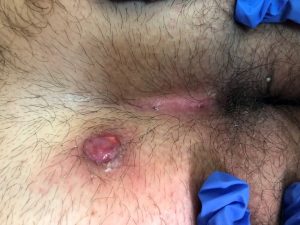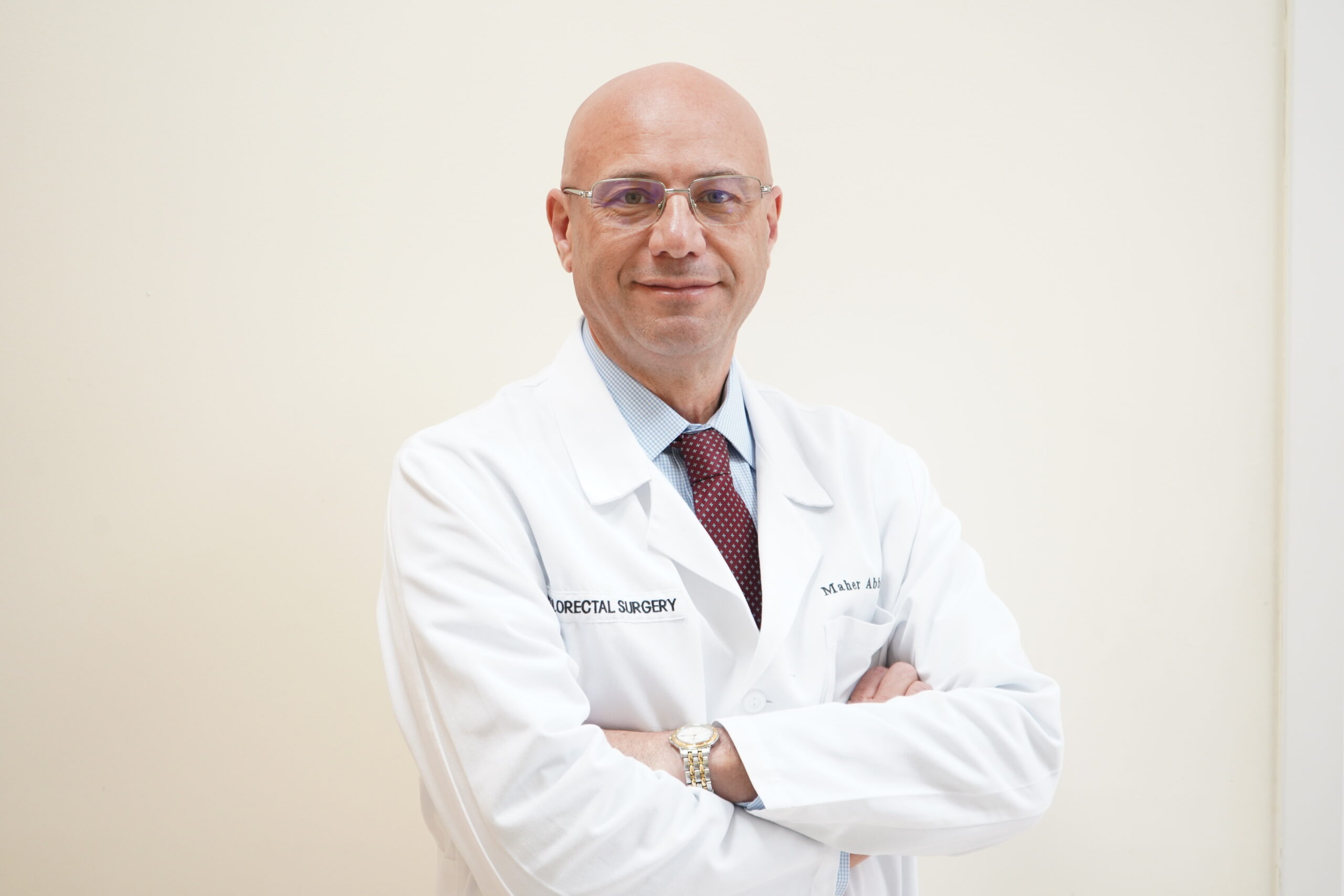What is a pilonidal hair cyst?
Pilonidal disease is a skin condition commonly referred to as a hair cyst. A collection of hair and bacteria are trapped in a cyst underneath the skin. The typical location is between the upper aspect of the buttocks around the tailbone area. Patients can present with a variety of symptoms including pain, swelling, redness, drainage of pus and/or blood from a skin opening [Figure 1]. Symptoms can be present from days to years. Occasionally patients can present with a painful abscess that requires immediate incision and drainage. The condition predominantly affects young people from teenage years into late adulthood. The main risk factor is excessive hair.

Figure 1 – Pilonidal hair cyst with small infected abscess
How is the diagnosis made?
Pilonidal cyst disease is diagnosed on physical examination conducted by an experienced physician. If the diagnosis is unclear or there is suspicion for deeper disease, an MRI scan (Magnetic Resonance Imaging Scan) is obtained. Furthermore, an MRI scan can be helpful in a previously treated patient who presents with pain in the area of surgery without any obvious skin abnormality. Under such scenario, the MRI scan can reveal if there is deeper recurrent disease.
What are the treatment options for pilonidal disease?
Medical Treatment
Patients with infected cyst or skin are treated initially with antibiotics and hair removal, unless there is an abscess (collection of liquid infected pus) which requires surgical drainage.
Surgical Treatment
Most patients with symptomatic hair cyst do benefit from surgical intervention. Dr. Maher Abbas personalizes the care of his patients with pilonidal disease based on a variety of factors. It is important to note that wound healing in the area can take time and can be challenging to manage especially in patients who are obese, have deep buttocks cleft, and/or are smokers. Postoperative wound care is as important as the surgical intervention itself. Several options are currently available (New Therapies for Pilonidal Disease):
- Incision and drainage of an abscess
- Laser obliteration and pit removal
- Unroofing and marsupialization
- Excision and flap closure of the wound
A major risk factor for non-healing or recurrence of pilonidal disease is hair infiltration of the wound. It is imperative that the patient is very diligent with hair removal from the wound and surrounding skin. Even after closure of the skin, the wound scar is soft and hair can poke through the skin and cause the disease to come back. Dr. Maher Abbas recommends hair removal during your recovery period and for at least 6 months after surgery until the scar of the wound is mature and complete (Pilonidal Wound Care).


